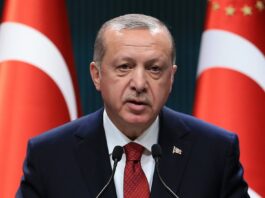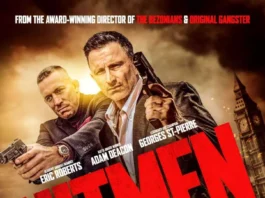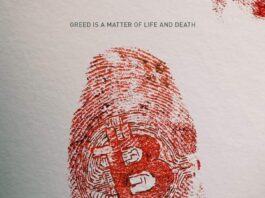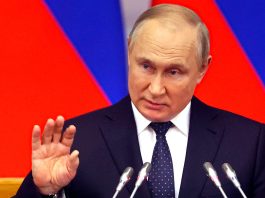
Decision-Making:
In Public Administration:
The decision-making as a process of administration has a wide range of application mainly in public administration and at the beginning of the fifties of last century it came to the limelight. Behind this the work of a celebrity of public administration was active and he was H. A. Simon. His renowned work—Administrative Behaviour; A Study of Decision-Making Process in Administrative Organisation was published in 1948.
Herbert Simon divided the concept into two main parts—one is decision— being arrived at and process of action. Mere making of decision is not enough and therefore its implementation. So both these sections are interconnected and important. Herbert Simon once said: a theory of administration should be concerned with the processes of decision as well as the processes of action. Simon pointed out that for the proper management of an organisation a policy of comprehensive in nature is required to be adopted.
So decision-making is a very important part of an organisation. Herbert Simon, in fact, is the pioneer in the field of decision-making concept because he felt that if decision were not taken properly and timely that may spoil the objective of the business organisation and keeping this in mind it is essential that an organisation will resort to utmost caution as to the adoption of decision and at the same time will focus on the implementation of the decision. So both taking and implementing decision are important.
Definition:
“Decision-making is usually defined as a process or sequence of activities involving stages of problem recognition, search for information, definition of alternatives and the selection of an actor of one from two or more alternatives consistent with the ranked preferences”.
ADVERTISEMENTS:
Definition offered by the C.O.D. is, the mathematical study of strategies for optimal decision-making between options involving different risks or expectations of gain or loss depending on the outcome.
Decision making theory is a theory of how rational individuals should behave under risk and uncertainty. It uses a set of axioms about how rational individuals behave which has been widely challenged on both empirical and theoretical ground.
This definition has been offered by the author of an article published in Oxford Concise Dictionary of Politics. The author emphasises on the rationality of individuals and at the same time how they should behave.
So we can say that decision-making denotes the formulation of general policy for the management of an organisation which may be business organisation or administrative organisation. The point to note is that the nature and implementation of decision-making may be different in both places but it remains that in every case the importance of decision-making remains intact. To sum up, the decision-making means the adoption and application of rational choice for the management of private, business or governmental organisation in an efficient manner.
Nature:
If we go through the numerous stages of decision-making and the implementation of the decision we shall find that it has certain features, some of which are briefly stated:
1. In one of his writings Herbert Simon has said that decision or decision making “is a matter of compromise”. Why it is called so? There are number of alternatives, before a policy/decision maker and while making decision he is to select one or more alternatives which will be suitable for him or which will serve his purpose.
While pursuing this policy or technique the decision-maker is forced to make compromises and the main aim of compromise is to fulfill the objective of the organisation or management. The compromise becomes inevitable on another ground. The policy maker must see that the policy is not divorced from real situation and the real situation chiefly relates to the declared policy of the management or government organ.
An abstract policy adopted with a lot of fanfare may not come to the benefit of the government department. So whenever the state authority adopts any policy or takes a decision it must see that conflict between the authority and policy will not arise. That is why it has been found that the policy maker is compelled to make compromises and modifications of approaches and policies or decisions.
2. There must be rationality in decision making process. We have just now pointed out that compromise and decision making both is linked with each other. The policy maker makes compromises on the ground that this policy/decision will be a realistic one. Similarly, while a decision is being made the decision maker must demonstrate utmost rationality.
He must consider all the aspects of policy such as elements entering into the policy making process, implication of implementation or feasibility of application etc. While the decision-maker considers actively all these aspects it will be found that he is rational. A decision should be both subjectively and objectively rational.
A decision would be “objectively” rational if it maximised the given values in a given situation, “subjectively” rational if it maximised attainment relative to the actual knowledge of the subject.
3. An important characteristic of decision-making is that it is never a product of a single man. It does not originate from a single brain; it is always the product of several men or brains who work together. In any governmental organisation several bureaucrats or officers work together and after considering all the aspects a decision is taken.
Different agencies or organisations or institutions overtly or covertly participate in the decision-making process. As for example, in liberal democracies pressure groups, political parties and various non-governmental organisations participate, though not in a formal way, in the decision-making activities.
This is because the liberal democracies treat all these as part of the political system and since the decision of the government affects all, their opinion should form a part of the decision making process. Even in autocracies the decision can reasonably be called the outcome of joint ventures. Different persons act as advisers to the autocrat and their suggestions influence the decision-making.
4. Decision-making does not relate to one issue or question but to a number of issues.
Some of the categories of decision have been identified by Wasby:
(a) Who made the decision?
(b) What was the decision?
(c) When was the decision made?
(d) How was the decision made?
(e) Where was the decision made?
(f) What were the characteristics of the decision situation?
(g) To what class or subclass of decisions does the decision belong?
(h) Why was the decision made?
Whenever a department or an agency of a government takes any decision or decides to take a decision that automatically comes into any one of the above noted categories. The decisions are never taken in vacuum. The decisions are made to serve definite purposes/purpose. We have already noted that behind every decision there must be rationality of the decision maker and there is no place of idiosyncrasy.
5. Experts of public administration and governmental organisations are of opinion that though rationality is the predominant determiner of decision-making process very often irrationality or partiality enters into decision making process and it is believed that this is inevitable in a democratic set up. Even in non-democratic systems irrationality becomes the focusing point of decision.
For example, the government is forced, (because of political consideration) to give priority to an irrational demand of a section of the community. But generally speaking this type of irrationality does not become the common feature. However, this sort of occurrence is unavoidable.
6. It has been observed by many scholars that irrationality and rationality conception gives birth to a lot of confusion because the policy maker is chiefly motivated by real situation which sometimes gives no credence to rationality. In other words, conflict arises between rationality and reality or the general welfare of the bodypolitic. The policy maker firmly believes that if rationality is given priority that may jeopardies the prospect of welfare principle and in that situation the policy maker may be compelled to give his preference for the general welfare consideration. So the dichotomisation between rationality and irrationality may appear irrelevant.
However, this issue should not blur the conceptualization of rationality idea because in special circumstances the rationality principle may be neglected but this should never be the general principle. If rationality is not given due importance the decision-making process and the objective of public utility concerns will be adversely affected.
Decision-Making and Pure Science of Politics:
It has been claimed by many, specifically by Robert Dahl (Modern Political Analysis, Fifth edition) that decision-making processes constitute the pure science of politics. Now, the question is what is meant by pure science of politics? Dahl says that in earlier time’s pure science of politics denoted evaluation and normative analysis of politics because in those days’ normative approaches to the study of politics was considered scientific political phenomena and concepts were evaluated in the background of norms or normative values and the norms which could win the test were considered scientific.
But this outlook underwent sea changes in course of time and political scientists began to show indifference to normative aspects of political science. Modern approach such as behaviouralism of Easton or structural-functionalism of Almond heavily relied upon empirical analysis and the decision-making theory could not keep itself away from this type of approach. For arriving at decision, it was thought, facts, data, information etc. are essential as well as their interpretation and application appeared to be a must.
Robert Dahl says: “the term ‘science’ has increasingly come to mean an empirical science of politics. According to this view, ah empirical science of politics would be concerned exclusively with the validity of the factual or empirical elements”. The implication of this contention is that without the help of data, facts and information the policy maker cannot make any decision. Rationality along with the data is the most important element of decision-making process.
In order to arrive at an acceptable and viable decision the application of rationality is not all, in order to be the decision rational empirical analysis is also essential which demands that the policy maker must test his decision empirically. Here several conceptual processes are mingled together. For example, decision-making process is inextricably associated with rationality, empiricism, application of other scientific methods.
The amalgamation of all these methods or streams of analysis has become inevitable because of the fact that decision-making, nowadays, is increasingly being considered very important part of the management of government business.
Naturally it is asserted that decision, as far as practicable, should be rational and scientific. That is why it has been found that the decision maker of the present epoch has become dependent on the empirical data and scientific methods.
Advent of scientific methods has become crucial because of the reason that modern age and the management of governmental agencies is becoming complex and in such circumstances speculation and inept handling will make any decision inchoate.
The interference of the scientific methods thus seems to be ineluctable. Application of sophisticated technology in management and globalisation has not adversely affected the importance of management in organisation. Rather all these have made management and politics more scientific.
Snyder’s Theory of Decision-Making:
Central Idea of Snyder:
The post-Second World War period witnessed a revolution in the thought system of political science. We have already touched behaviouralism, structural-functionalism communications theory etc. Now we shall focus our attention on Snyder’s approach to the study of political science which is commonly known as decision-making theory or approach to the study of politics.
From the mid-fifties to the end of fifties Richard Snyder published a series of writings whose chief objective was to propagate the importance of decision-making approach.
His decision-making theory can be explained in the form of following points:
1. We know that the general systems theory of David Easton and the structural- functional approach of Gabriel Almond and other related theories are more or less static in nature which means that all these theories deal with those elements that are static. But Snyder’s point of view is that society is not only complex but also dynamic.
If so the real approach to the study of politics would be to conceptualise the analysis so that it can cope with dynamic aspects of society or the changes that are taking place very frequently. Snyder, therefore, claims that his decision-making approach is dynamic. While the decision makers make decision they consider all the (or most of the) situations. If they fail to do this the decision will not achieve acceptability and credibility.
2. It has been observed by Snyder that the decision-making process has been playing a very crucial part in the administration of any business organisation or governmental department. But it is unfortunate that none took care of analysing the concept in details. Only in the fifties of the last century two persons, Herbert Simon and C.I. Bernard dealt with the decision-making concept.
Simon’s Models of Man and Bernard’s The Function of the Executive were published in 1957 and 1958 respectively. Snyder draws our attention to two important points. One is decision-making plays so important a role in any business organisation and governmental department that it cannot be neglected at all. Secondly, if so a comprehensive theory based on empiricism and scientific methods is to be built up. It is interesting to note that Snyder, Simon and Bernard are contemporary.
Snyder says that it is essential to go through the processes of the decision making, what factors are involved in this process, to analyse the decision, their impact upon the society. If we treat the subject in this way we shall find that the concept has dynamised the political system and processes of analysing political phenomena.
3. We know that in liberal democratic systems various groups, political parties and non-governmental organisations play important role in the administration. Decision-making process includes all of them (or most of them) into the orbit of analysis.
Why Decision-Making?
1. Richard Snyder has maintained that in every society there is political action and behind every action there is the role of human activity. Again human action relates to policy decision. How the society is to be managed or governmental department is to be administered all is related to the decision taken by human beings.
That is the policy/decision is the dynamic force of action. Therefore, in order to study the society or the management of department it is necessary to analyse all the aspects of policy-making.
2. Analysis of policy-making processes also helps us to acquire a comprehensive knowledge about the dynamics of society. Knowledge about dynamics of society is required for the formulation of future policy. Society is always changing and naturally today’s policy may be irrelevant for future.
So it is very important for the formulation of a policy for future generation. If we stop our activity, society or its advancement will come to a halt.
3. Different elements such as human beings, economic factors, political phenomena, governmental departments, different institutions, organisations, groups etc. are actively or inactively involved in the social activities. But for a comprehensive social management a composite decision must be made and this cannot be done with the formulation of decision. Situations, factors, elements, processes, persons all are to be brought under an umbrella and this is decision.
Factors Influencing Decision-making:
Decision-making differs from society to society. A decision suitable for a developed, industrialised and highly educated society may not be equally suitable for a very backward agricultural society or a tribal area. For this situation the decision or the decision-making process is not at all responsible. A decision is made not for the decision itself but for the inhabitants of society.
Naturally the crux of the issue is how to be aware of the situation or material environment suitable for decision making and the chief exponent of the concept was aware of it’. Snyder has said that there are mainly three factors which in one way or other influence the decision-making process.
Broadly, they are three in number:
1. The first is internal setting of the society:
Internal setting includes many elements some of which are:
The nature and functioning of the social organisation such as political parties, pressure groups, non-governmental organisations, public opinion, agencies helping the formation of public opinion, nature of the political system etc. All these elements enter into the domain of decision-making process. In a democratic society social, political and other types of organisations enjoy freedom in their day to day activities.
A good rapport exists between the authority on the one hand and numerous organisations on the other hand. But in an autocratic regime such a situation cannot be thought. Naturally the content and type of decision in both regimes need not be identical. Again, the process of socialisation in all systems is not same. When the policy maker proceeds to decide a policy it is his duty to bring all these factors into his active consideration.
Especially the socialisation has an important part in the entire process. This is due to the fact that for an effective decision cooperation between the decision-makers and common people is necessary. Cooperation means people’s participation. Again, for the implementation of decision people’s cooperation is also required. All these are made easy by a high degree of socialisation.
2. There is external set up or setting. This condition is especially important for the policy maker who makes decisions for the external relations of the state. It is known to all the students of international politics that today the term international society has earned wide publicity and all the nation-states are the members of this society.
When the decision-maker of a state makes a policy/decision he must be aware of the fact that his decision must be in conformity with the policies and objectives of other nations and this should not lead to conflict among nations. If this were the objective of the decision-maker he cannot make policy according to his personal preferences or sweet will.
Moreover, in this age of globalisation the nation-states have come closer to each other and the interdependence among them has surpassed all the past records. It is absolutely unimaginable for a state; whatever may the extent of power (in military sense) and wealth be, to decide alone, to go alone and to live alone.
So, while making any policy, it is obligatory on the part of every state to think deeply about the impact of its policy upon other states. A failure in this respect will invite complexities and animosity among the states. It is generally observed that in the present day world system domestic policy cannot be separated from world politics and a policy maker must keep this in mind.
3. The decision-making is a process and passes through a number of stages. Many persons organisations, institutions etc. are involved in the decision-making process and even an ordinary decision cannot be taken abruptly. Serious and considerable thought is invested for a proper decision.
Snyder says that the communication and information network is closely associated with the decision-making process. Because for a decision various information and data are necessary and this can be provided by an efficient communication network. The psychological factor is also involved in the formulation of a policy.
For what purpose the authority is going to formulate a decision which means the motive of the policy maker. When all the materials are at the disposal of the policy maker he starts to formulate a policy. Moreover, there are different structures of a political system and these structures have their allotted functions.
The purpose of policy making is to embrace all these structures and their functions. Not only this, the purpose of all decisions is to make suitable all the structures and their functions for changed situations.
If so the decision-maker must see that the structures and organisations are doing their duties and he must consider what changes are required (if changes are at all necessary) to bring about improvement upon the organisational and functional aspects of political and other institutions. Viewed in this light Snyder claims that his approach may be applied in political science in general.
Decision-Making Theories:
New Tendency:
Before the end of the 1950s an elaborate idea about decision-making theory was built up by many and among them the most prominent figures, were Richard Snyder, Chester Barnard and Herbert Simon. The last two scholars developed a theory mainly for the public administration. Richard Snyder was interested in domestic and international politics and he applied his model in these two segments of political science.
But there is an overlapping of decision making process so far as public administration and political science are concerned. Some of the concepts of decision making meant for the public administration have also their strong bearing in political science. However, the central idea formulated and developed in the fifties continued to spread its wings and influence even in the seventies and early eighties.
Following is the remark of a well-known author: “Indeed during the 1960s and 1970s a distinctive area of study, policy analysis was developed. This set out to examine how policy was initiated, formulated and implemented and how the policy process could be improved”.
We call it a new tendency because interest about decision-making had already emerged in the mid-fifties but in the sixties arid seventies separate areas for the study of decision-making were selected and scholars devoted more time and intellect for the proliferation of the concept. Several factors contributed to the emergence of decision-making theory and the most important of them is the strong urge to verify the concept with the help of data and scientific principles.
Kinds of Theories:
Decisions are quite common to all forms of political systems such as authoritarian structures, democratic set up, totalitarian regimes. The management of a government department, the administration of private organisation and even a philanthropic association require decision and not one decision but a bundle of decisions.
But the making of decision is not all, the implementation, revision and other aspects are also equally important.
Considering all these some have divided the decision-making process into several models and these may be stated in the following ways:
Rational actor model, Incremental model, Bureaucratic organisation model and Belief system model.
Rational Actor Model:
The basic idea of the rational actor model is derived from economic theory and utilitarianism. The core concept of the theory is based on the idea of “Economic man” who takes all sorts of decision on the basis of rationality and utility.
The economic man or the rational man decides to pursue a particular process which thinks in his judgment rational and which will ensure maximum utility. So rationality and utility are the two important criteria that lie at the heart of decision-making process.
While the decision is going to be made the following procedures are strictly adhered to:
(1) The issue or area is identified on which the policy is to be made.
(2) The objective of the policy is decided: The policy maker decides for what purpose the policy is going to be made.
(3) Materials or means are to be collected for making a policy.
(4) It may be that all the means or materials could not be used and then in that case the decision-maker selects only the relevant materials.
It is clear from the above analysis that the two criteria are active in the entire process of decision-making—rationality and utility. Keeping these two criteria in mind the policy-maker proceeds and proceeds very cautiously. He does not leave anything to chance. He wants to maximise the utility from the policy he is going to make.
Rational actor model may reasonably be compared with a well-known concept of economics or business management, and it is cost-benefit approach which denotes that when a businessman decides to adopt a policy he will see first of all how much cost he will have to incur for the implementation of the policy and then how much benefit he expects to receive.
Policy-makers and politicians fall under this category because of the accountability. They think that if the policy does not generate expected benefits or results they are not supposed to implement or take any decision. A decision must always be goal or benefit oriented. Borrowing from economists the political scientists have applied the rational actor model in political science for the purpose of making decision and it received forthwith admiration from many corners.
Incremental Model:
There is a second theory which is called incremental model. For a perfect and bold decision it is necessary that facts and information must be correct and impartial. But in practice this situation hardly prevails. The consequence is the policy/decision becomes faulty. Because of this drawback the decision-makers are not interested in making one time policy.
They feel that policies are to be formulated in such a way that there will be enough scope of review and change when ever required. This creates a scope for a new model labelled as incrementalism.
Stated briefly, the model is: “Policy-making is therefore a continuous, exploratory process, lacking overriding goals and clear cut ends, policy-makers tend to operate within an existing pattern or framework adjusting their position in the light of feedback in the form of information about the impact of earlier decisions.”
What transpires from the above analysis is the decision maker adopts a tendency of evasion. He wants to avoid or evade problem or uncertainty and for that reason he decides to follow a policy of incrementalism. Policy is not prepared once for all, rather it is made step by step and the decision-maker proceeds stage by stage. In such an approach there is great importance of flexibility in the policy formulation.
The policy-maker knows that a policy cannot be made once for all. Situation and circumstances change very frequently and the policy maker must amend policy other-wise it will not be able to serve the purpose. For this particular reason the exponents (particularly C. E. Lindblom) have propounded a thesis that it is a continuous process.
In the same line of thought another observer points out: “Policy is not made once for all, it is made and remade endlessly. Policy making is a process of successive approximation to some desired objectives”. If circumstances demand any change or reconsideration of policy, the decision maker takes steps in that direction.
The administrator or the policy-maker uses the past experience while making policy and he moves very cautiously. His movement comprises also very small steps. He avoids big jumps that would go beyond current knowledge. The decision-maker, of course, makes prediction but that is based on past experience. The decision-maker avoids radical change in any policy formulation his technique is incremental change or successive change.
Incrementalism also envisages, at limited scale, comparison of satisfactory results. If the consequence of the implementation of policy are satisfactory the decision-maker will make next step. Lindblom, the chief exponent of incrementalism, has said that in this approach of decision making there is very little scope of change, mistake and miscarriage of any policy because the policy maker refrains himself from taking any type of risk.
His past experience is his best guide. Moreover, there is ample scope of modification. We, therefore, see that in this model of decision-making, policy-makers are not inclined in making policy at one stroke. He proceeds step by step and also is very cautious, and in the process he amends and changes earlier policy.
Bureaucratic Organisation Model:
We shall now deal with a model which was framed in the background of Cuban Missile crisis in 1962 and the model was championed by Graham Allison in 1971. We have already noted that the bureaucratic structure or the political organisation of political system have positive influence on the policy making processes.
It is believed that the large political and other organisations have their own values, ideas and long cherished and well guarded inclinations. All these create definite impact upon the decision-making processes. Hence, while decision is being made, the organisational process cannot be neglected.
In all political systems bureaucrats play a crucial role in the various stages of the formulation of decision. The head of the state, Prime Minister, Foreign Minister etc. have a role no doubt but the real and important role is generally played by the bureaucrats. However, the structure and the extent of influence of bureaucrats in all political systems are not identical everywhere.
The bureaucrats and related agencies have their own outlook, values and assessment about incidents and when policy making process starts the top government officers and allied agencies release their efforts to guide the formulation of policies in the light they cherish. In fact, the liberal democratic system state does not play an overriding role.
The state as state exists and it guides, but it is not the final voice on any national and international issue, organisational structure and bureaucracy are deciding factors. The exponents of the model believe that though the ministers have a positive role in the policy-making process, the actual function is performed by bureaucrats and it is held that during the Cuban crisis this came to limelight. The heads of the states had a role but more important role was played by bureaucrats.
Belief System Model:
Generally there is a belief system which can be termed as ideology or deep-rooted belief. Some scholars are of opinion that in the arena of decision-making beliefs or ideologies have a very important influence. Here crops up a confusion. If the decision-makers are rational it will be supposed that they are not to be influenced by beliefs and ideology. But this argument does not stand the test of reality.
If the belief or attachment to ideology is pervasive, or firm the decision-maker may temporarily give priority to ideology or belief. The policy makers of a communist country will not formulate such a policy as will violate basic principles of communism although rationality demands the violation.
Two examples may be cited. In 1956, Britain, USA and France launched a combined attack against General Nasser, the President of Egypt, on the issue of the nationalisation of Suez Canal. Nasser wanted fund from USA and Britain for the construction of Aswan Dam on the river Nile.
First these two powers agreed and subsequently when they refused Nasser got assurance from the then USSR and this infuriated the two big powers and they attacked Nasser. Here the anti-communist feeling worked. The Cuban Missile Crisis is also the consequence of the same belief.
Fidel Castro, the President of Cuba, got economic and military assistance from communist Russia which was against American interest. These two are the handiwork of anti- communist feeling and policy makers made it a part of their policy/decision.
Stages of Decision-Making:
We shall now deal with a very important and interesting aspect of decision-making and it is various stages of decision-making. The decision-making can be divided into several stages. For example, at the very rudimentary stage it is to be decided that time is quite ripe for taking a decision because a problem has arisen and in order to cope with it a decision is to be adopted. Again the problem is not to be allowed to aggravate.
Taking of a decision is not all it is to be properly formulated. Then the issues of implementation and evaluation arise. Researchers have divided all these into four different categories which are: Policy initiation, policy formulation, policy implementation and policy evaluation.
Policy Initiation:
Policy initiation is the crucial stage of decision-making. A policy is initiated, generally, in the background of problems or critical issues. As for instance, there is pollution of different types and their harmfulness is quite known to all. But policies are not taken as soon as problems arise and this generally happens. There is a gap between the emergence of problem and the taking of a decision or clusters of decisions.
The problem of pollution started to arise in the fifties and sixties and the authorities began to think about it in the eighties. Similarly, there are the problems of unemployment and terrorist activities which are particularly crucial in some parts of the globe. Though the problems are quite old taking of action had actually started in the last decade of the twentieth century. This we call policy initiation.
Policy may originate from two sources. The first is the government or the authority of the political system can take action. This may be called policy from the above. In democracy very often the political parties, pressure groups, public opinion, mass media, political agitation etc. create pressure on the authority to take a decision in order to give relief to the people or to meet their demands. The authority knows that if demands are not met that will open the door to complications.
Number of factors play important role in the initiation of decisions. Some of them are stated briefly. Scholars, writers and academics are very important factors. These persons are not directly associated with the political activities and government but their writings and opinions initiate the decision-making process. J. M. Keynes, observations influenced the British government to adopt anti-unemployment measures.
Similarly, many liberal thinkers expressed their anti-state views in unequivocal terms. However, the chief originators or initiators of decisions are government, parties, groups, ‘people themselves. People sometime create such situation or events that force the government to take policy on the eve of election parties declare schemes through manifestos and after victory implement them.
Formulation of Decision:
Once it has been decided that in order to cope with the situation or problem a decision is to be prepared, policy-makers then proceed to adopt decision and this is called policy/decision formulation which is the second stage. Making of decision is also highly complex because the persons associated with this task cannot do the job at a stroke.
Various proposals and alternatives are placed before the policy-makers and they are to select only the necessary ones. This is a tough job because the quality and efficacy of the decision depends to a large extent on the elements with the help of which it has been made. Again the policy/decision-making is a composite which means number of persons is involved in the preparation. Differences of opinion there may be and these must be settled before a policy is finally made.
Policy formulation also has a stage. The policy must be stated in clear terms and the objectives shall be stated clearly. It is the duty of the decision-makers to say that the decision has been formulated in the background of certain problems and issues and it is designed to perform such and such tasks.
In the decision it will also be stated that priority to some issues has been given. A decision is not a permanent matter, with the change of time and circumstances the policy must be able to adjust and there shall be provisions.
There is another aspect of policy formulation. A policy may be formulated on the basis of consultation which means that only few decision-makers are not involved in the formulation works. They do the job in deep consultation with others who are supposed to be associated with it.
Sometimes we see that few persons formulate a policy without taking into consideration of others’ views and finally it is imposed on others. The former can conveniently be called democratic procedure and the latter an autocratic method.
The formulation of policy may aim either at short-term or long-term objectives. Whatever be the case the formulators must proceed taking into consideration of the nature of the objectives. It has been found that the nature of policy depends on the attitude, outlook and belief of the persons who provides the leadership in the formulation. Margaret Thatcher was the P.M. of Britain during the period 1979-1990.
She formulated a number of policies whose core elements constitute deregulation and privatization combined with authoritarian social policy. In economic and social policies she wanted to reduce the importance and role of the state but once the state has adopted a policy of privatization that must be implemented by it with authoritarian power.
The Marxists also formulate policy for radical changes of society. But the final decision is taken by few top brass of party or bureaucracy. Even in the USA, top industrialists are found taking important part in the policy formulation.
Implementation of Policy:
Implementation of decision is the third stage of policy. In conventional analysis there is a dichotomy between policy-making and policy implementation. The political leaders or the government formulate decision and then it is left for the bureaucrats to implement it. In this way there is a clear dichotomy between formulation and implementation. But in recent analysis this dichotomy has been kept aside.
The formulators of the decision decide the aspects of implementation. They will not formulate such policies as well face problems in the period of implementation. If the formulators could not predict these problems implementation will face not only troubles, the very objective will remain unrealized. In a democratic state if the persons in charge of implementation do not do the job properly the political leaders must be prepared to give explanations to the electorate.
There is another aspect of implementation. Once a decision has been implemented the formulators will have to study the impact of the decision. This is necessary because of the reason that if the policy fails to reach the goal its revision or reformulation will be required. Of course, hundred percent successes in implementation can never be expected.
But there is moderate range and if it is not achieved the persons will review the policy. So we find that implementation of policy is a stage which can warn the formulators. In democratic systems the impact of the implementation of policy is highly considered because the persons want to know the effects of policy. This they did taking account of the forth-coming elections.
Evaluation:
The final stage of the decision-making process is the evaluation. The policy makers or the authority after the implementation sits to ponder over the pros and cons of the policy. The chief objective is to study the success and failure of the policy.
This is called evaluation. On what basis the authority starts to evaluate the decision which has been implemented? It collects facts, data or information about the decision and on the basis of all these the evaluation task is done. Needless to say that here, the communication network function and the political system fully utilises this for its purpose. What are the consequences of evaluation?
(1) If the activities of the decision are fully unsatisfactory that is the decision has squarely failed then the authority/policy makers may think of abandoning the policy. Of course this is not a very usual procedure because if the decisions were made after applying a good deal of rationality the question of abandoning it does not arise. If it is abandoned a new policy is being imitated to replace the old one.
(2) If the decision is partly successful, the decision-makers start to investigate the causes of such results and if they feel that there are reasonable grounds of partial success and partial failure, then in that situation they seriously think about revising the decision keeping the causes of failure in mind.
(3) In the cases of complete and partial failure the authority orders a thorough enquiry. It wants to know whether the decision itself is defective or ill-timed or inappropriate.
(4) If the cause of the failure is the defective or ineffective communication network, then the policy makers will make an attempt to rectify the communication system.
(5) The failure may be caused by the people’s unwillingness to accept the decision. If the people feel that the decision implemented by the political authority of the state cannot meet their needs, they will not co-operate with the authority in this regard. Or the people may object to the policy or ideological or political grounds the implementation may cause problems.
(6) The success of a policy/decision largely depends upon people’s acceptability and this again depends on the answer to the question—who gets? What? And at what cost? In the operative aspects of the decision this questions are of vital importance.
If a policy is rejected root and branch, a new policy is initiated by the authority and the stages start anew. A decision is initiated, formulated, implemented and finally evaluated. One point is the whole process of decision making along with its implementation are very complex and almost all the segments of society are interlinked with each other. In democracy there is no question of imposing a decision on the public. People always view decision from the standpoint of teleology.
General Assessment:
1. There is a large proliferation of the decision-making theory. There is a decision-making approach in business organisation. For the satisfactory management and administration of the big business organisation, decision-making process is being structured and it is periodically assessed and amended to suit the needs of time and attitude of society, people etc. Again there is a decision-making approach for domestic politics.
The bureaucrats and other policy makers formulate policies for agencies and various governmental departments. Thirdly, there is a decision-making approach for international politics. So these are the three different approaches. Andrew Heywood suggests four different models viz. Rational actor model, Incremental model, Bureaucratic organisation model and Belief system model.
All these models suggested by Heywood have viewed decision-making theory from their respective standpoints. It is generally believed that all these models unnecessarily create confusion in the minds of readers. -We can ask what is the exact approach to the study of decision-making approach?
2. Critics have raised objection about the too much emphasis on rationality. The term rationality is associated with the concept of economic man who seeks to take a venture in the business world on the basis of cost-benefit calculation.
The critics observe that what holds good for one discipline may not hold good for another discipline. Rational economic man and rational policy-maker are not same or identical persons. The approaches of both are likely to differ and to produce different results. Hence the application of rationality with same context may raise eyebrows.
3. The application of rationality raises question. For examples, it means the decision maker very carefully proceeds while he decides to take an action or announce a policy. He weighs all the aspects and sides of any venture. This is rationality. Secondly, he analyses and judges all the alternatives and their advantages and disadvantages. Thirdly, after considering everything he takes a decision. This is called rationality.
But critics argue that this is the extreme manifestation of rationality and it is too difficult to apply in reality. Situation, alternatives, circumstances etc. are subject to change and in that case the concept of rationality will prove futile.
4. Some critics are of opinion that too much dependence on alternatives and numerous other considerations are not the suitable way of framing decisions. This excessive dependence is the manifestation of irrationality.
The decision-maker will definitely weigh the pros and cons of all alternatives and factors but, in ultimate analysis he will have to take a final decision. This will reveal his intelligence, acumen, experiences, and ability to form opinion and to take decision. A good decision-maker is one who takes decision on his own after considering everything.
5. Rationality of the decision maker can never be the sole determiner of any effective policy/decision. For an effective policy besides rationality also required other elements such as correct and impartial facts and information, normative value of society beliefs and faith etc. It is unfortunate that Snyder fails of give due consideration to all these elements/factors.
A decision-maker frames a policy on the basis of news provided by an efficient communication-network. But this is also a quite separate issue and the relation between decision-making and the communication network is to be properly studied and investigated. In Snyder’s analysis we do not find that confirmation.
6. There is another drawback of this approach. In the decision-making process very often personal liking/disliking, phobia etc. play vital role. When this happens the decision-making process and the decision itself both are bound to be imperfect. Without highlighting this aspect Snyder has committed a mistake.
During the heyday of Cold War period Washington was at loggerhead with Moscow without any valid reason. The main plank of animosity was intolerance, blind opposition to other’s belief and faith and to destroy the opposite. All these cannot be the proper criteria of decision-making process, but during the Cold War they were. Since these constituted the bases of decision-making process the decision itself failed to be imperfect and defective.
7. “When examined more closely rational calculation may not appear to be a particularly convincing model of decision-making…. The model is more easily applied to individuals”. The implication of this criticism is the individuals in their personal cases may take the help of this model and for large business organisations or governmental departments this is not a fruitful way.
8. Y. Dror has criticised Lindblom’s incremental model of decision-making. Dror argues that incremental change by successive limited comparison is only adequate if the results of present policies are reasonably satisfactory, if there is continuity in the nature of the problem, and if there is continuity in the available means for dealing with it. Lindblom’s incrementalism cannot satisfy all these “ifs” simultaneously.
9. There is hardly any importance of the political leadership in the bureaucratic organisation model. In both parliamentary and presidential systems political leadership always gets precedence over the bureaucratic leadership. But bureaucratic organisational model offers us a scheme in which bureaucracy plays a leading role in policy-making process.
This is unusual. F.D. Roosevelt’s role in New Deal period is known to many. All the major policies to combat the Great Depression were initiated by him and bureaucracy had nothing to do. But so far as the importance of bureaucracy in policymaking affairs is concerned Ralph Miliband, noted Marxist, holds the view that in USA bureaucracy plays vital part in both policy formulation and administration.
(a) A bundle of drawbacks stated above should not detract our attention from the contribution Snyder’s theory of decision-making makes to the analysis of international policies in general and power politics in particular.
During the Cold War period and even in subsequent years Snyder’s decision-making approach was profusely used to explain the international events and the gestures of the big and superpowers. The decision-making approach is regarded as a convenient and effective method of analysing foreign policy and the relations among nations. So, the worth of the approach is undeniable.
(b) We know that in international relations and politics (sometimes two are separate) there are several factors such as states, individuals, international organisations, transitional organisations etc. In different spheres these actors have been found to be active. In the wide area of foreign policy both the states and the individuals are both actors.
It is the duty of the state to prepare the general guideline of any foreign policy and the individuals prepare the foreign policy. This is the decision-making. Without individuals (they may be bureaucrats, technocrats or any other person) the decision making concept will never be translated into reality. The state is an abstract concept. The individuals perform everything and the decisions go in the name of state.
(c) It has been observed by the critics that the decision-making theory is more concerned with the processes of decision-making and less with the consequences of decisions. But this criticism is unfounded.
In the incremental model it has been said that the policy-makers do not always jump upon policy-making. They proceed slowly and cautiously and study the consequences of a policy after which they decide the next course of action. Every decision-maker meticulously observes the impact of the policy and after that considers how to proceed.
(d) Snyder has approached decisions-making from a particular angle which is— individuals play important part. But we have analysed other models which highlight the other aspects of the decision-making approach. For example, some scholars have said that beliefs and ideology have important part in the decision-making process.
Again, various organisations and institutions have made their contribution to the making of foreign policy or decision making processes. So Snyder’s theory does not offer us a complete picture about decision-making process.
But this does not mean that his approach is wrong or has no meaning in reality. The credit of Snyder is he is a pioneer in this field and he has drawn our attention to the fact that decision making approach can conveniently be used to study foreign policy and to investigate international events.
Conclusion:
In conclusion few more words may be stated. The decision-making approach is not without any limitations. But the mere fact is that it has immense importance in the present day structure of administration and relation between authority and public. The state must do some works for the welfare of the people, and that requires policy formulation.
The state cannot move in an uncharted sea and if it tries to do so that will be a fruitless venture. Hence for the proper and effective performance and administration decision/policy is essential and if so there must be a logical and scientific method of policy making. Decision-making is an important part of state administration and we should not have any hesitation in admitting that Snyder has done a seminal job by initiating and popularising the decision-making approach to politics.












